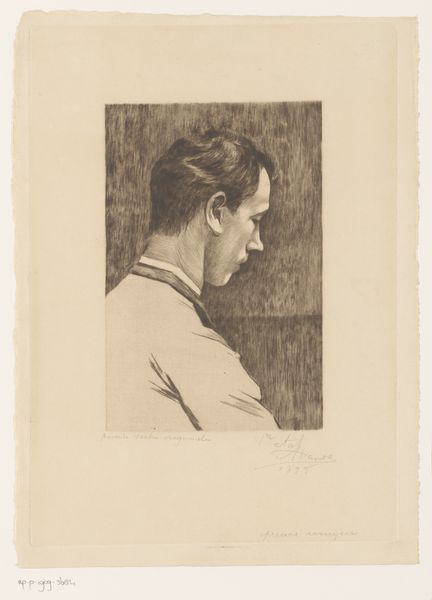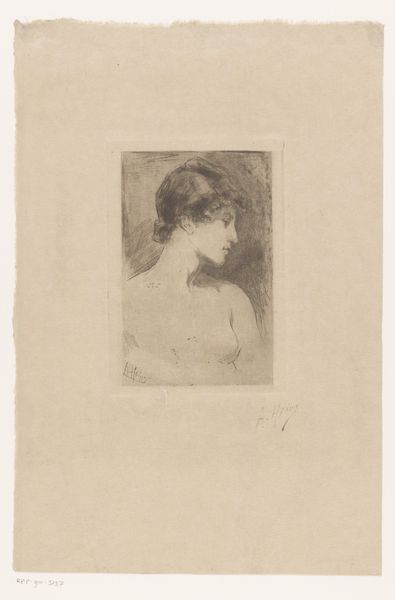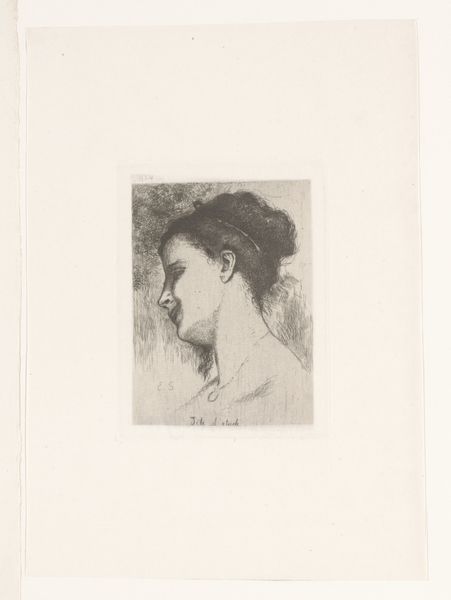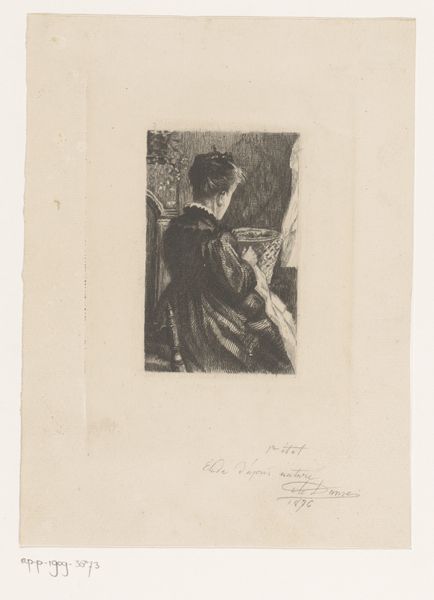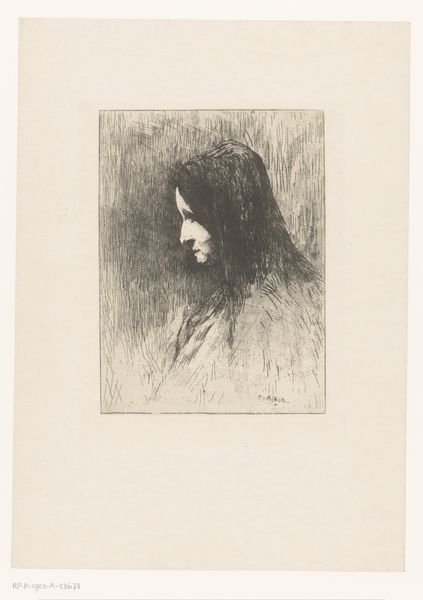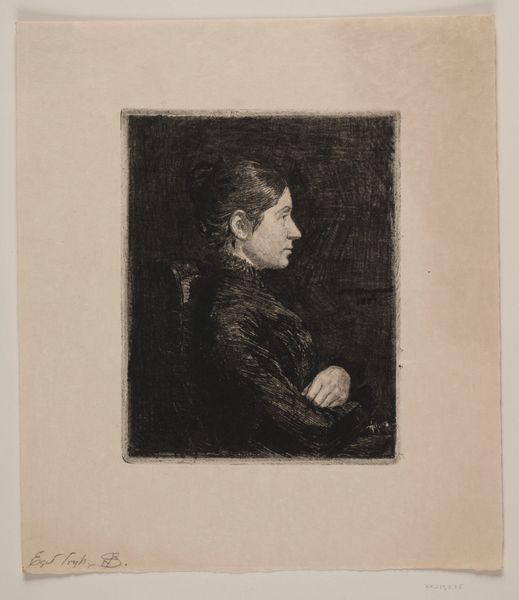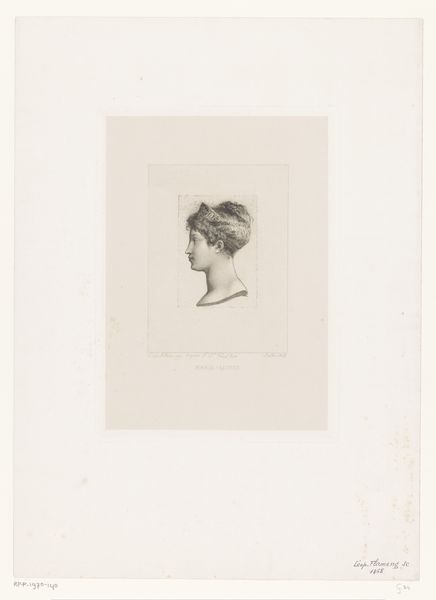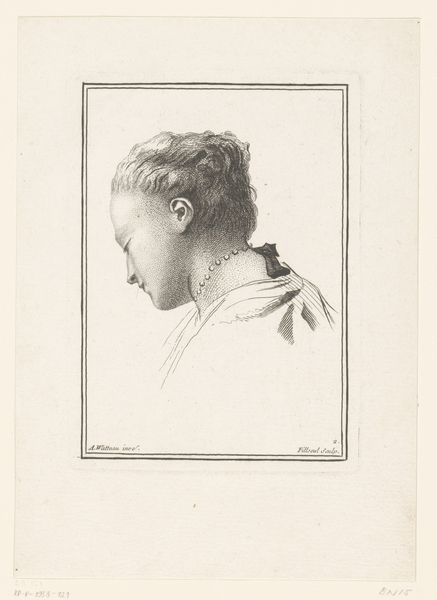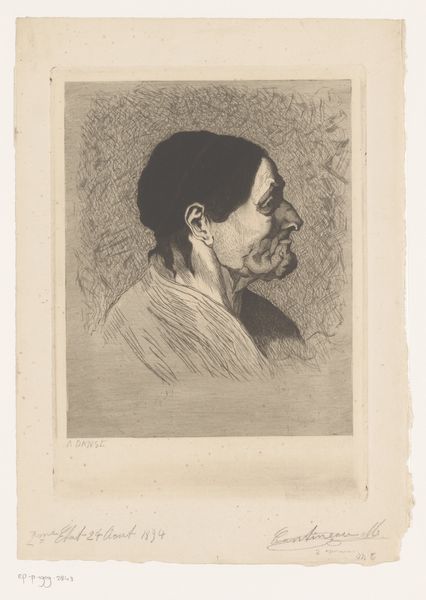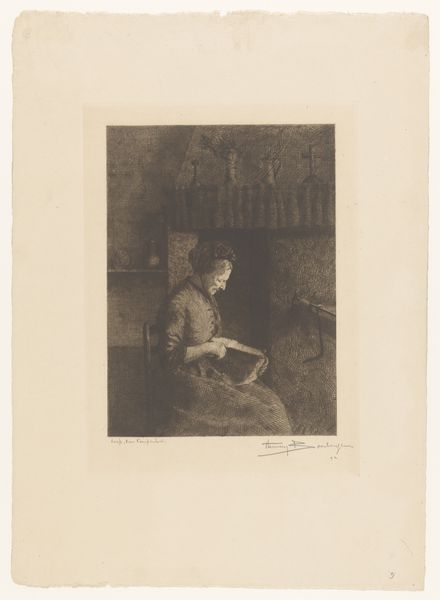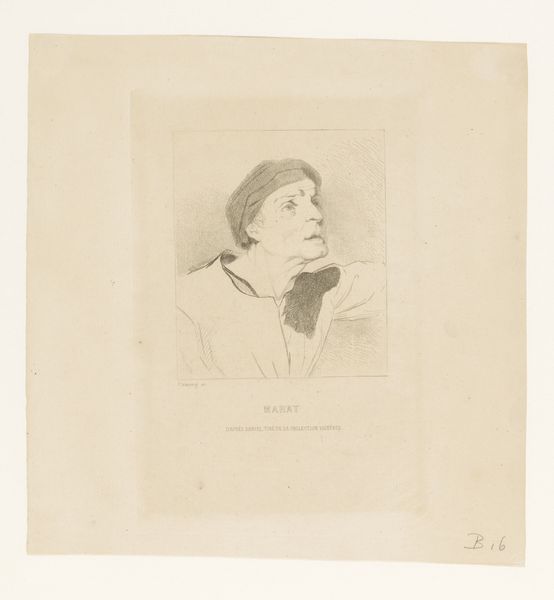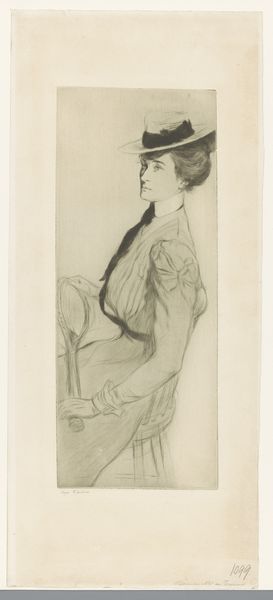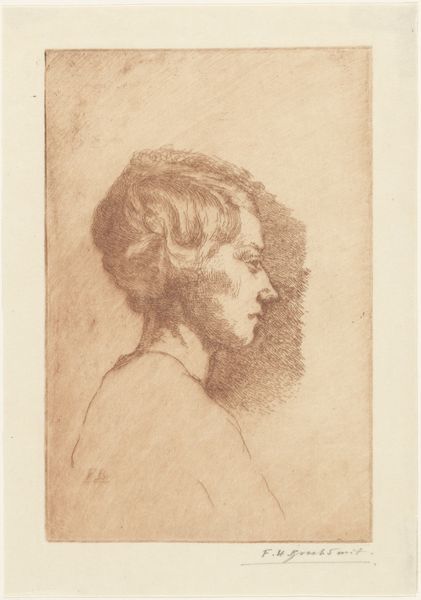
drawing, print, graphite, engraving
#
portrait
#
pencil drawn
#
drawing
# print
#
pencil drawing
#
graphite
#
portrait drawing
#
engraving
#
realism
Dimensions: height 319 mm, width 224 mm
Copyright: Rijks Museum: Open Domain
This etching of an unknown young man was made in 1895 by Auguste Danse. The process of etching begins with a metal plate, usually copper or zinc, coated with a waxy, acid-resistant substance called a ground. The artist then scratches an image into the ground with a needle, exposing the metal underneath. The plate is then immersed in acid, which bites into the exposed lines, creating grooves. After the ground is removed, ink is applied to the plate, filling the incised lines. The surface is wiped clean, and the image is transferred to paper under high pressure using a printing press. Look closely and you'll notice the density of fine lines that create tone and shadow, lending depth and texture to the image. The linear nature of the etching process gives the portrait a crisp, detailed quality, capturing the delicate features and subtle expression of the sitter. The act of etching is inherently laborious, requiring patience and precision. Thinking about this helps us to see that the print is a result of a collaboration between the artist, the materials, and the industrial processes that made it possible.
Comments
No comments
Be the first to comment and join the conversation on the ultimate creative platform.
